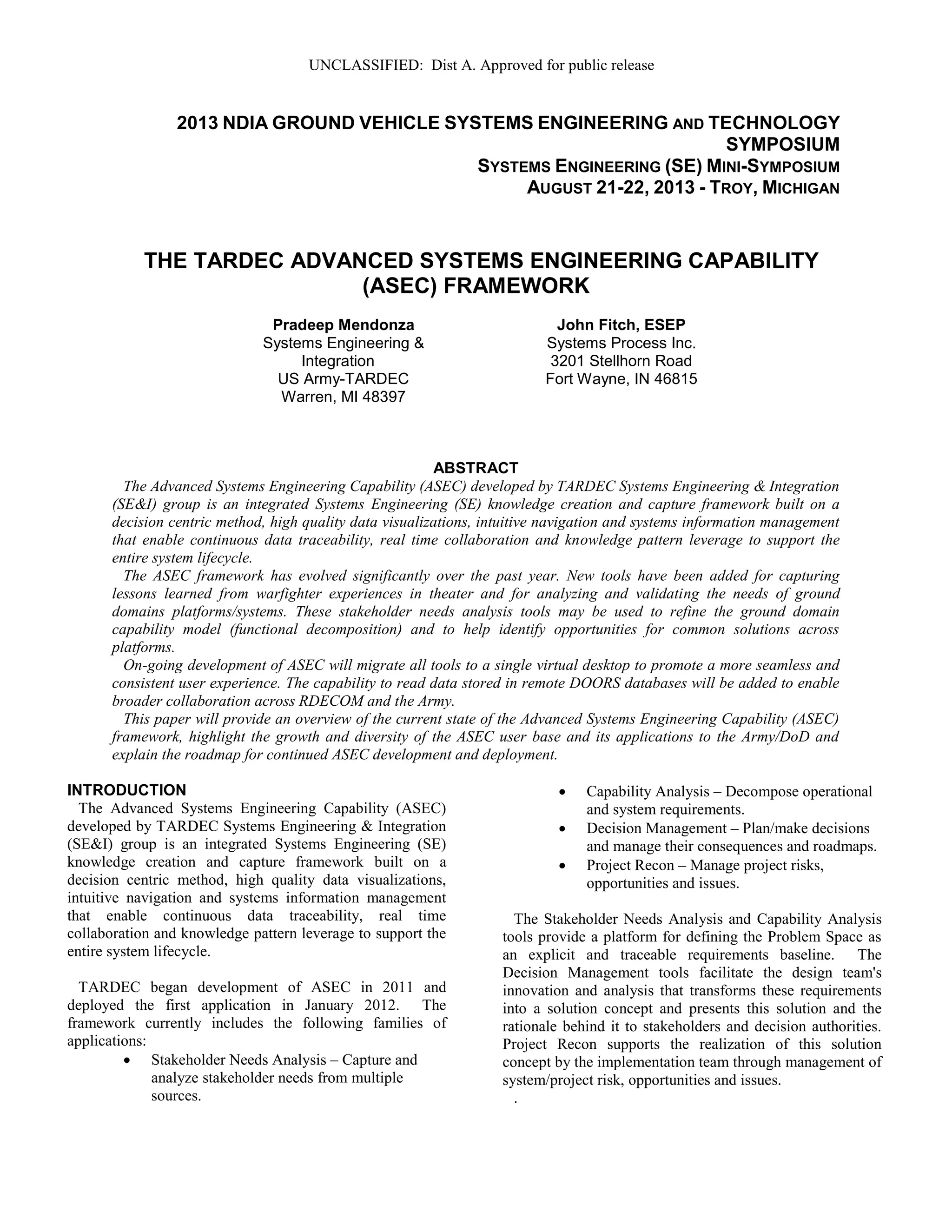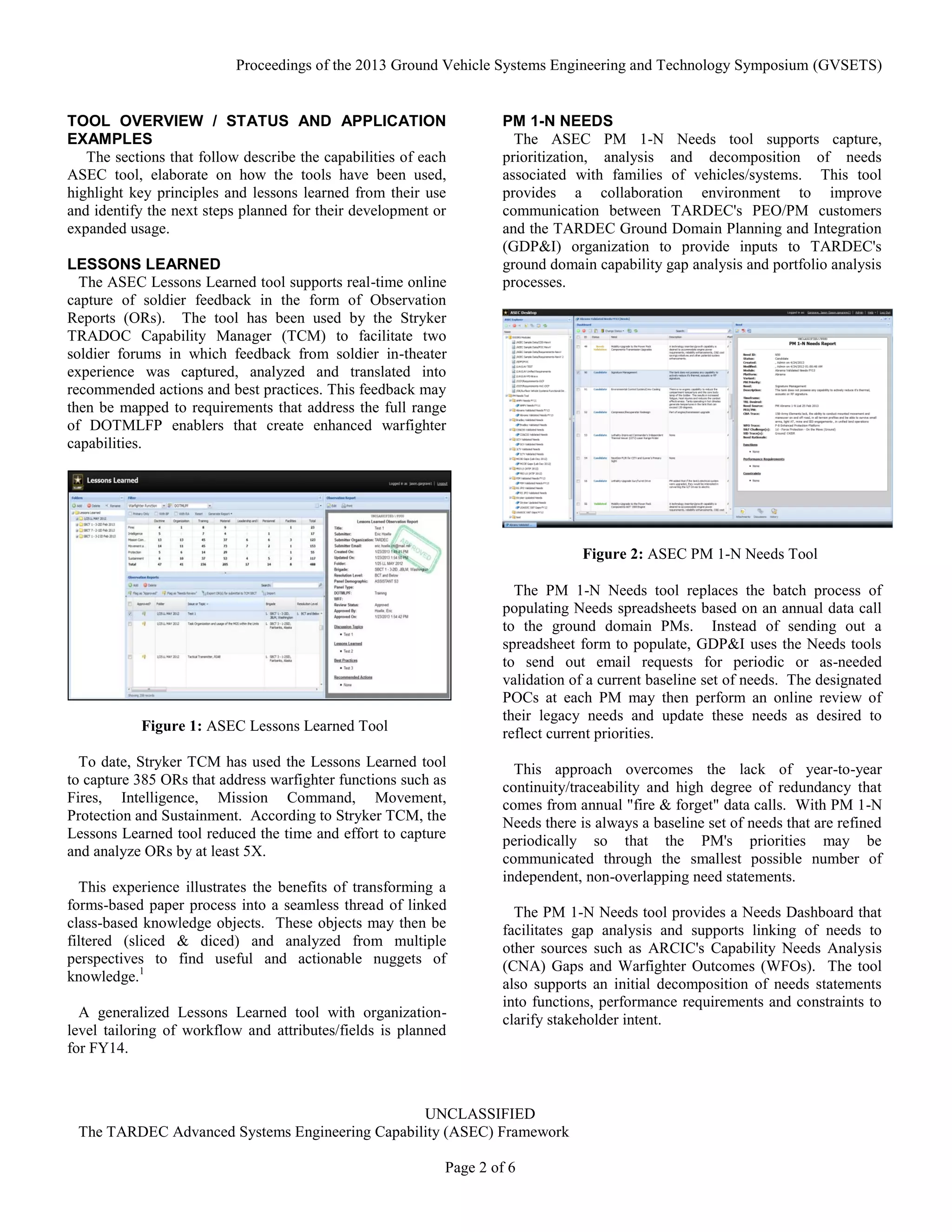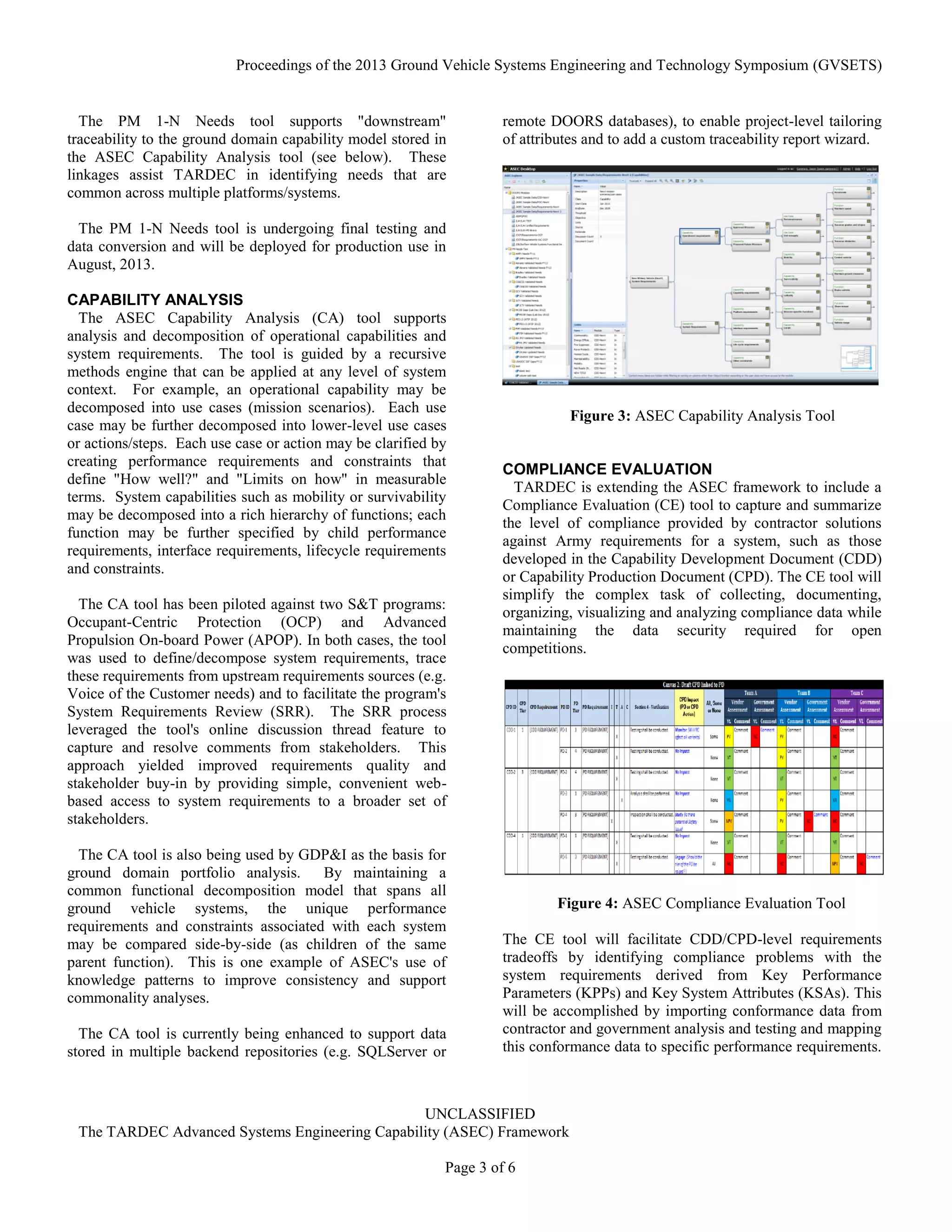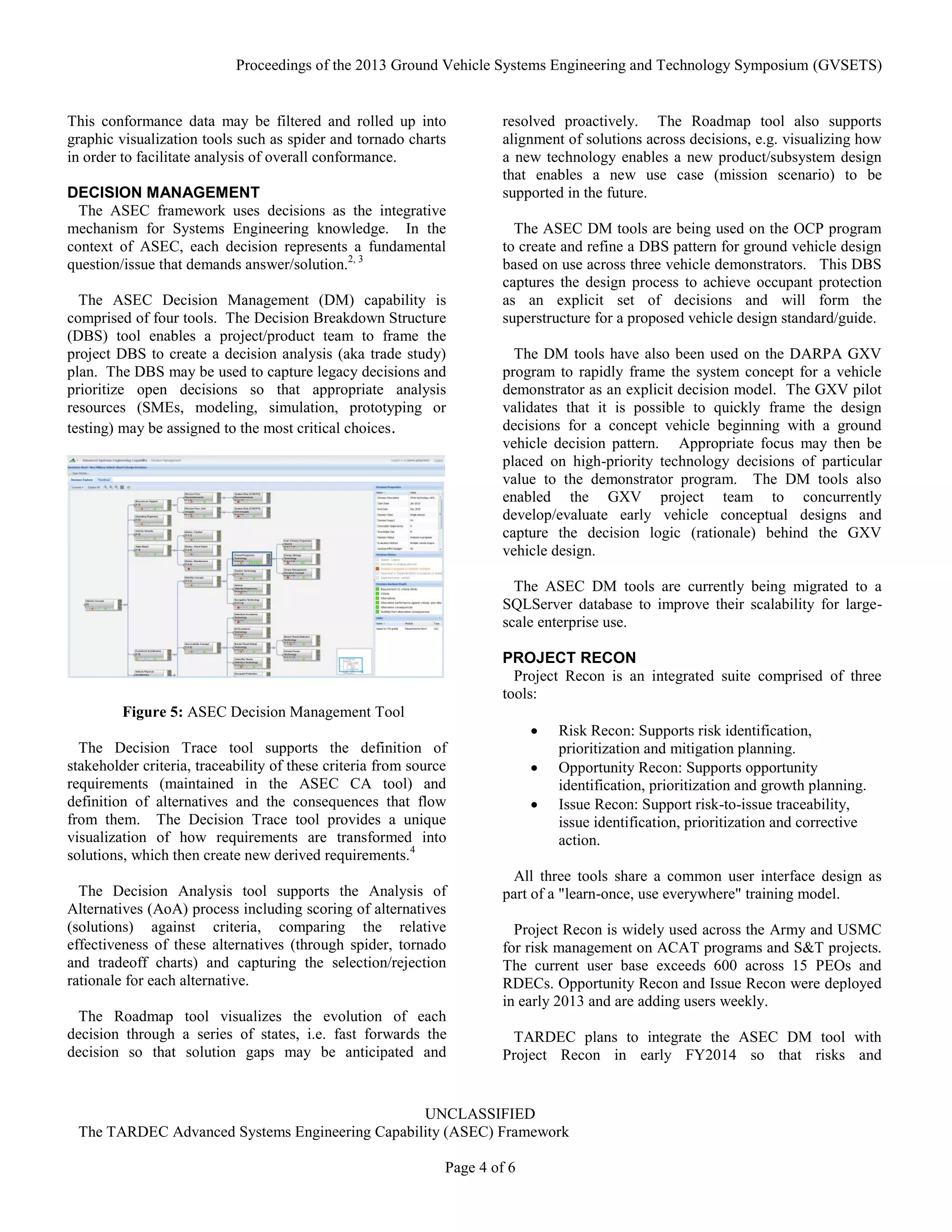The Advanced Systems Engineering Capability (ASEC) framework developed by TARDEC provides integrated systems engineering tools to support knowledge creation, capture, and management across the entire system lifecycle. The ASEC framework includes tools for stakeholder needs analysis, capability analysis, decision management, project risk management, and lessons learned capture. These tools provide capabilities like requirements decomposition, alternative evaluation, and collaboration. The ASEC framework is being applied to programs like vehicle design and technology roadmapping to improve decision-making. Ongoing work includes further tool integration, expanded use cases, and external data integration.





![Proceedings of the 2013 Ground Vehicle Systems Engineering and Technology Symposium (GVSETS)
UNCLASSIFIED
The TARDEC Advanced Systems Engineering Capability (ASEC) Framework
Page 6 of 6
REFERENCES
[1] Mendonza, P. and Fitch, J.A. 2011. “Object Based
Systems Engineering (OBSE)”. Paper presented at the
Fourteenth Annual Systems Engineering Conference of
the National Defense Industrial Association (NDIA), San
Diego, CA (US), 24-27 October.
[2] Mendonza, P. and Fitch, J.A. 2013. “Integrating System
Models around Decisions”. Paper presented at 23nd
Annual International Symposium of the International
Council on Systems Engineering, Philadelphia, PA (US),
24-27 June.
[3] Mendonza, P. and Fitch, J.A. 2012. “Decision
Management (DM) as the engine for scalable, cross-
domain Systems Engineering”. Paper presented at 22nd
Annual International Symposium of the International
Council on Systems Engineering, Rome, Italy, 9-12 July.
[4] Fitch, J.A. 2009. "Exploiting Decision-to-Requirements
Traceability, briefing to NDIA CMMI Conference,
Denver, CO (US), 9 November, 2009.
[5] Fitch, J.A. and DeGregorio, G.D. 2005. "Managing
Strategy/Platform Decisions across the Enterprise and
over Time". Paper presented at IEEE International
Engineering Management Conference, Newfoundland,
BC, Canada, 11-13 September.
** Disclaimer: Reference herein to any specific commercial
company, product, process, or service by trade name,
trademark, manufacturer, or otherwise, does not necessarily
constitute or imply its endorsement, recommendation, or
favoring by the United States Government or the
Department of the Army (DoA). The opinions of the authors
expressed herein do not necessarily state or reflect those of
the United States Government or the DoA, and shall not be
used for advertising or product endorsement purposes.**](https://image.slidesharecdn.com/4feb791e-8cad-47b5-ad1c-73386b950f83-160521150217/75/The-TARDEC-Advanced-Systems-Engineering-Capability-ASEC-Framework-5-6-2048.jpg)